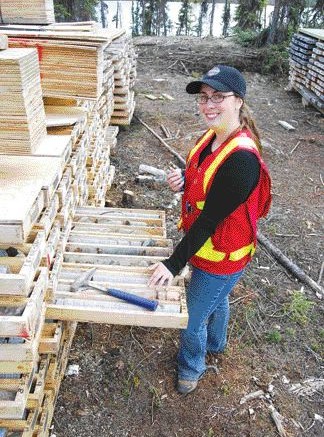Rare earth elements may not be as sexy as gold or silver, but they are quietly involved in powering everything from iPods and flat-screen televisions to hybrid cars, digital cameras, and jet fighter engines.
Currently, demand outstrips supply by about 10,000 tonnes per year, according to Great Western Minerals Group (GWG-V, GWMGF-O). China produces 97% of the world’s rare earth elements, but the central government in Beijing slashed its exports this year by 30% while adding duties to some rare earth products, says Great Western’s president, Jim Engdahl.
Companies that want to purchase rare earth metals from China have to set up value-added facilities there, Engdahl adds.
“Some companies do that because that is their only source and they are forced into it,” he explains. “It’s an economic twist that China puts on it to provide more domestic growth.”
That’s one of the reasons why Great Western Minerals saw a great opportunity when privately held Titan Mining Group offered it an interest in a rare earth-bearing property in Utah.
Under the agreement announced at the end of August, Great Western Minerals will pay Titan US$4.3 million for an immediate 25% stake in the rare earth elements on the property and will have the exclusive right to explore for the metals on the site.
The 171-sq.-km site is located near Salt Lake City, in Juab Cty., which at one time was considered to be one of the richest mining districts in the United States, the company says.
According to the U.S. Geological Survey (USGS), the United States had been largely self-sufficient in rare earth elements until the early 1990s, when it started turning to China for more and more of its supply. By 1999-2000, more than 90% of the rare earth elements required by U.S. industry came from deposits in China.
Demand is only going to grow as the world uses more nanotechnology. Lightweight and ultra-powerful magnets made from rare earth metals, for instance, have enabled industry to make miniaturized electrical and electronic components used in appliances, audio and video equipment, computers, cars, communications systems and military gear. Miniaturized multi-gigabyte portable disk drives and DVD drives, for example, require rare earth magnets, the USGS notes on its website.
The USGS also points out that the U.S. dependence on imports from China “comes at a time when rare earth elements have become increasingly important in defence applications, including jet fighter engines and other aircraft components, missile guidance systems, electronic countermeasures, underwater mine detection, anti-missile defence, range finding and space-based satellite power and communication systems.”
Efforts to slow climate change and protect the environment also make the future look bright for companies actively exploring for rare earth metals.
One of their biggest applications is likely to be in the car industry. Rare earth magnets are used to make pollution-control devices for automobiles like catalytic converters. They are also used in the battery systems and electric motors of environmentally friendly hybrid cars.
Toyota Motor Corp. (TM-N) uses rare earth elements in the production of its popular hybrid Prius model. The success of the hybrid — one of Japan’s most beloved exports — is being felt far and wide. In April, New York Mayor Michael Bloomberg announced that all of the city’s yellow taxis will need to use hybrid technology and meet new fuel consumption standards by 2012.
Rare earth elements magnetic-refrigeration technology can also cut energy consumption and reduce emissions of greenhouse gases. Three or four companies are already experimenting with the metals to make freon-free refrigerators, Engdahl says.
Their low toxicity is an advantage too. Rechargeable batteries using rare earth elements are starting to replace polluting cadmium and lead batteries.
In addition to its 25% stake in the rare earth property near Salt Lake City, Great Western Minerals also has a project at Hoidas Lake, in Saskatchewan. Originally discovered in the 1950s, when companies were exploring for uranium following the Second World War, the Hoidas Lake property includes more than 30 known rare earth showings situated along a fault structure with a 10-km strike.
The project has a measured and indicated resource (compliant with National Instrument 43-101) of over 1.15 million tonnes grading 2.36% total rare earth elements.
While more and more companies are getting interested in the sector, Engdahl says, the number remains small, including Avalon Ventures (AVL-V, AVVTF-O), Rare Element Resources (RES-V, RRLMF-O), Lynas Corp. (LYSCF-O, LYC-A ) and Arafura Resources (ARAFF-OM ARU-A).


Be the first to comment on "Great Western picks up stake in Utah rare earths property"